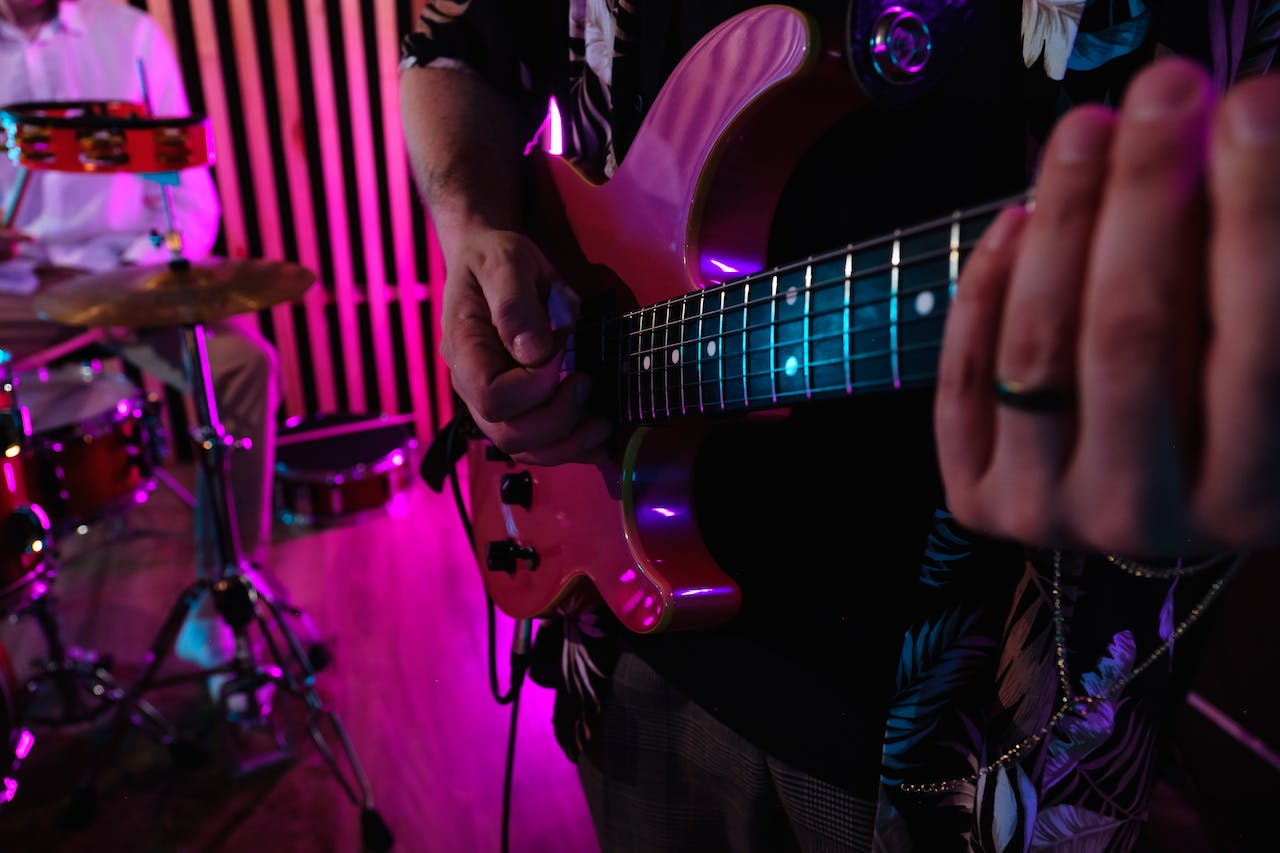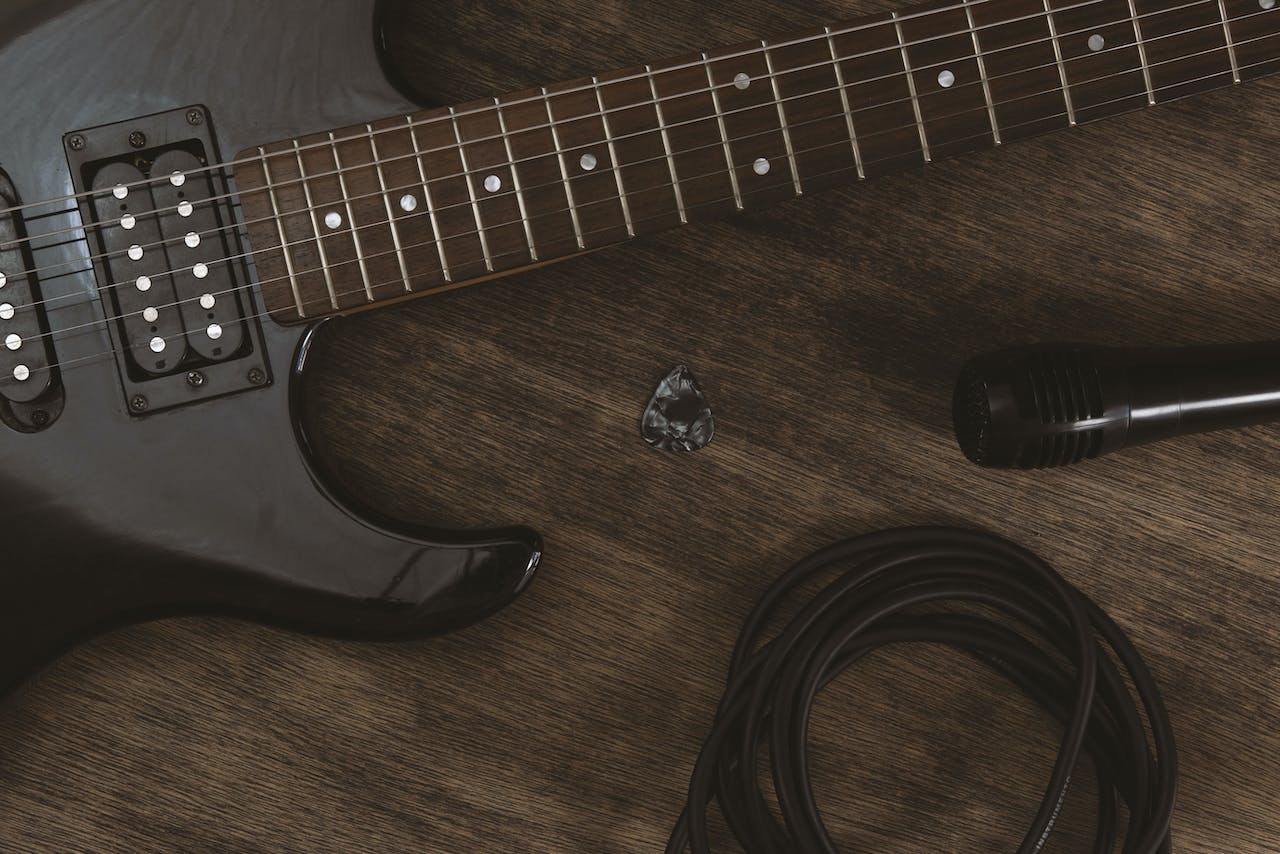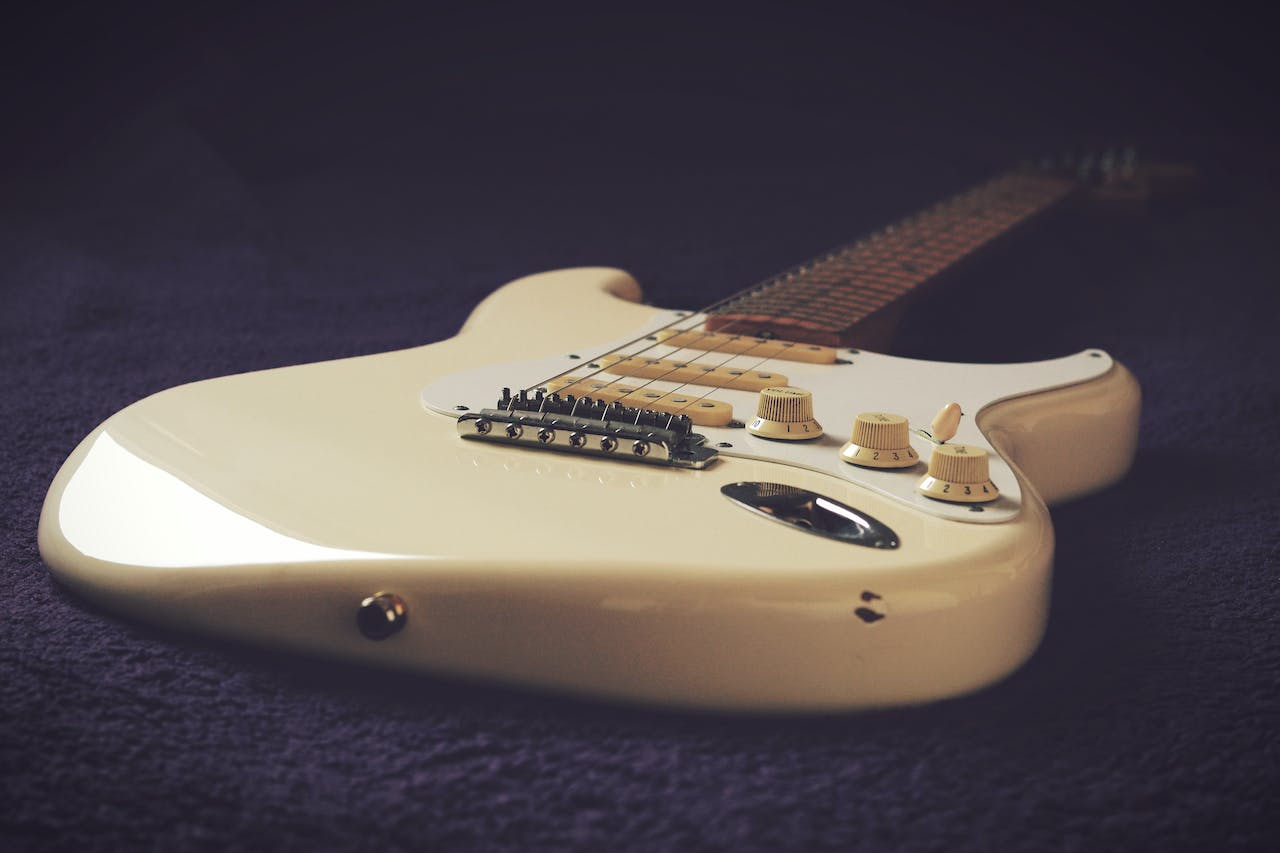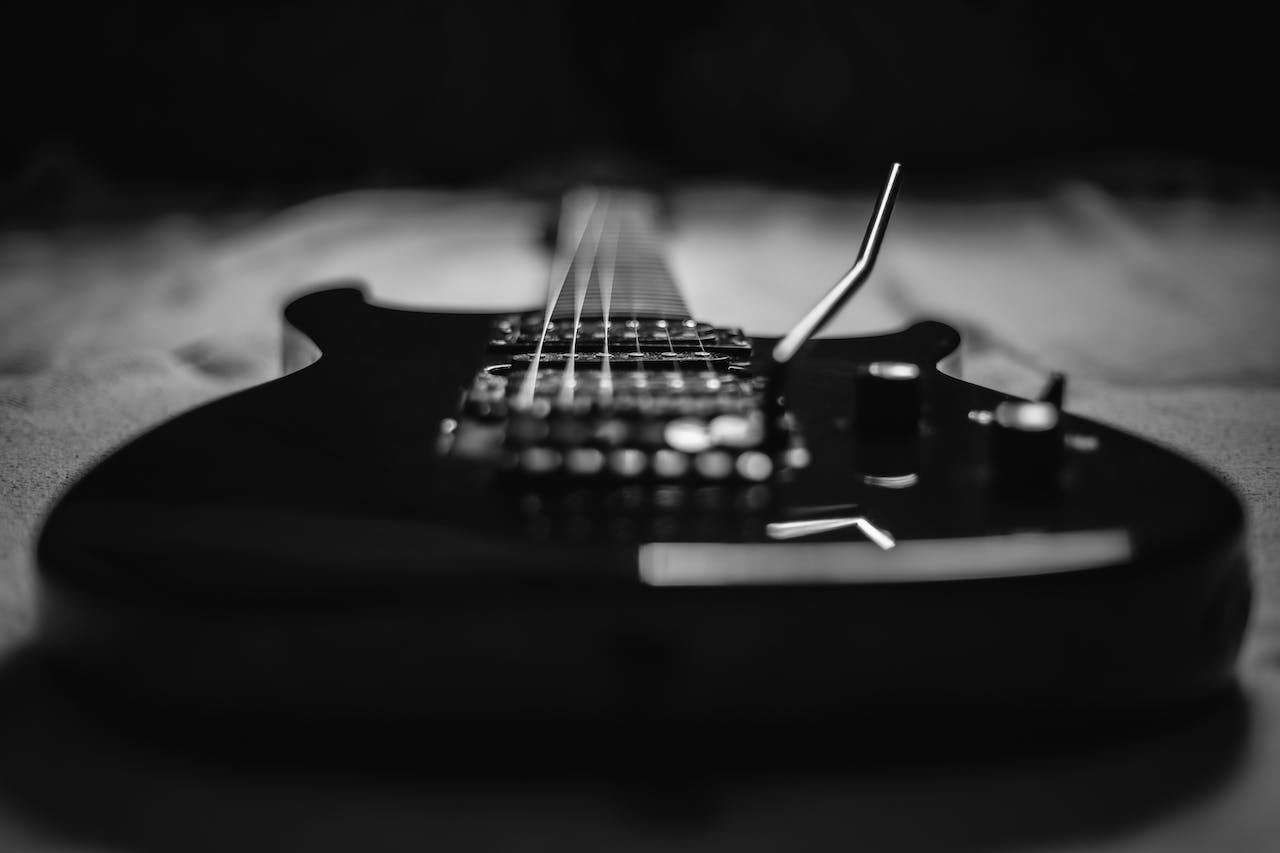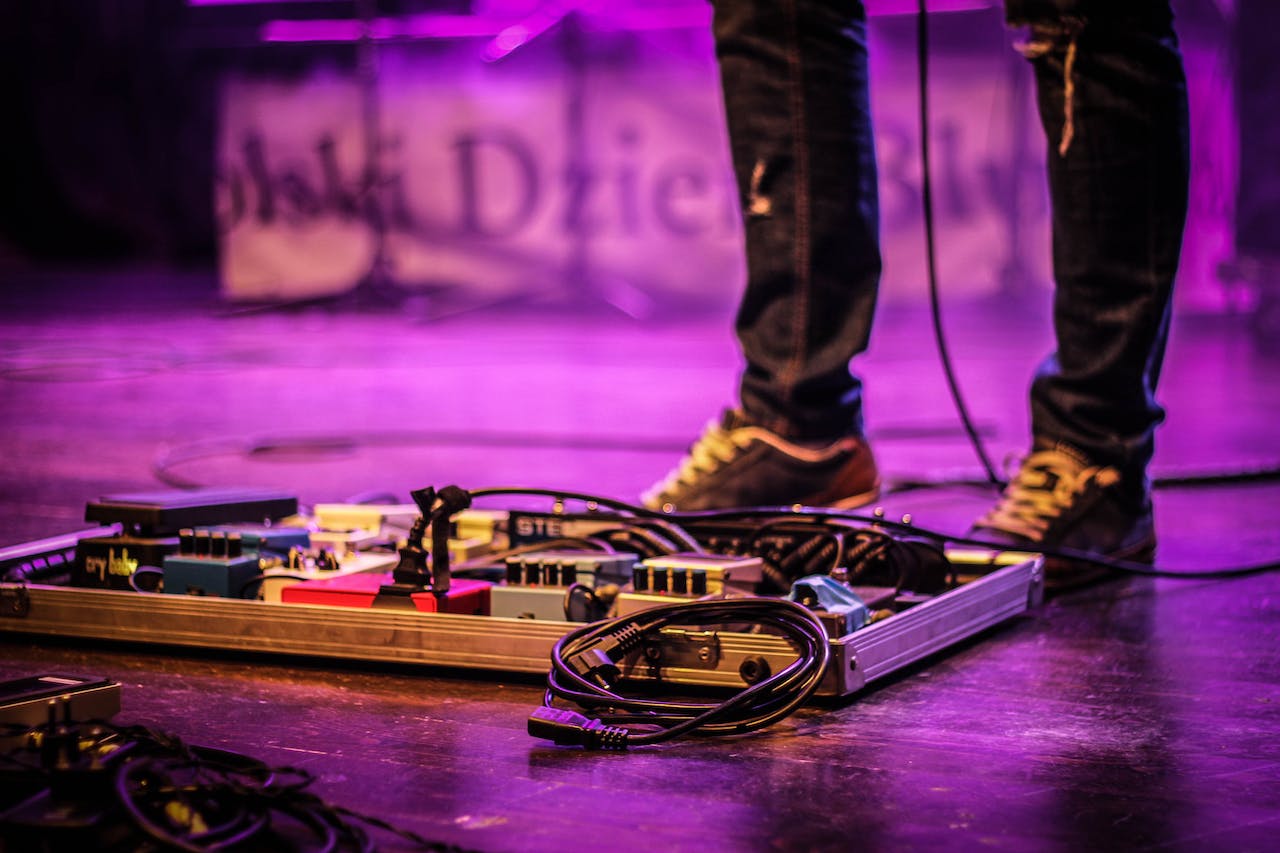From the flamboyant showmanship of glam metal to the intricate precision of neoclassical shredding, the 1980s saw guitarists elevating the instrument to new heights of technical prowess and creative expression. In this dynamic landscape, each guitarist brought their unique flavor to the mix, contributing to the rich and varied tapestry of 1980s music. Their techniques, ranging from lightning-fast solos to innovative use of effects, set new standards in guitar playing and left a lasting impact on the music industry.
These iconic players became not just musicians but cultural symbols of an era marked by dramatic shifts in music and style. In this article, we explore the most iconic guitarists of the 1980s, delving into their careers, their contributions to the music scene, and the legacies they have left behind.
Eddie Van Halen (Van Halen)
Eddie Van Halen redefined the art of guitar playing in the 1980s with his innovative techniques and charismatic stage presence. As the lead guitarist of Van Halen, he was known for his groundbreaking tapping technique, lightning-fast solos, and harmonics. Eddie’s work on songs like “Eruption” showcased his extraordinary ability to blend speed and melody in a way that was both technically impressive and musically engaging. His influence extended beyond his virtuosic solos; he also had a knack for crafting memorable riffs, as heard in hits like “Jump” and “Panama.”
Van Halen’s impact on the music scene in the 1980s was monumental. Eddie’s playing style inspired an entire generation of guitarists and changed the landscape of rock guitar. His innovations in guitar design and amplification also contributed to his unique sound, making him a true pioneer in the world of guitar music. Eddie Van Halen’s legacy is characterized by his pioneering spirit and his profound influence on the technique and sound of rock guitar.
Randy Rhoads (Ozzy Osbourne)
Randy Rhoads, known for his work with Ozzy Osbourne, was a guitarist who combined classical music influences with heavy metal to create a unique and powerful sound. His classical guitar training was evident in his precise playing style and complex compositions. Rhoads’ work on songs like “Crazy Train” and “Mr. Crowley” featured some of the most iconic riffs and solos of the 1980s, blending technical proficiency with raw energy.
Tragically, Rhoads’ career was cut short by his untimely death in 1982, but his influence on guitar music continues to be felt. His dedication to his craft and his innovative approach to guitar playing made him a hero to many aspiring guitarists. Rhoads’ legacy is one of technical excellence, creative brilliance, and a lasting impact on the sound of heavy metal.
Stevie Ray Vaughan (Double Trouble)
Stevie Ray Vaughan revitalized the blues genre in the 1980s with his passionate playing and deep understanding of blues traditions. As the leader of Double Trouble, he brought the blues back to the mainstream, infusing it with rock and jazz elements. Vaughan’s guitar work, characterized by its emotional intensity and technical skill, shone on tracks like “Pride and Joy” and “Texas Flood.” His ability to convey deep emotion through his instrument made his performances memorable and impactful.
Vaughan’s playing style was rooted in the blues but expanded upon those foundations to create something fresh and vibrant. His use of heavy string gauges, forceful vibrato, and signature Fender Stratocaster tone contributed to his distinctive sound. Despite his untimely death in 1990, Stevie Ray Vaughan’s influence remains strong, and he is remembered as one of the greatest guitarists of his era.
Yngwie Malmsteen
Yngwie Malmsteen brought a new level of technical virtuosity to rock guitar in the 1980s. His neoclassical style, characterized by rapid arpeggios, sweep picking, and a heavy influence from Baroque and Romantic classical music, set him apart from his peers. Malmsteen’s debut album “Rising Force” showcased his innovative approach and technical prowess, especially on tracks like “Black Star” and “Far Beyond The Sun.”
Malmsteen’s influence extended beyond his jaw-dropping speed and technical ability. His integration of classical music into a rock context opened new possibilities for guitar composition and technique. He inspired a wave of guitarists to explore the neoclassical style, leaving a lasting mark on the genre.
Slash (Guns N’ Roses)
Slash, the lead guitarist of Guns N’ Roses, became one of the most recognizable figures in rock music during the 1980s. His iconic top hat and Les Paul guitar, combined with his distinctive, melodic playing style, made him a guitar hero for the ages. Slash’s riffs and solos on songs like “Sweet Child o’ Mine” and “November Rain” are some of the most memorable in rock history, characterized by their expressiveness and bluesy feel.
Slash’s contribution to Guns N’ Roses’ sound was integral to the band’s success. His ability to craft guitar parts that complemented Axl Rose’s vocals and the band’s hard-hitting rhythm section was a key factor in the creation of their classic albums. Slash’s playing style, combining technical skill with a deep feel for the music, made him an influential figure in the rock world.
The Edge (U2)
The Edge, the guitarist for U2, brought a unique approach to his instrument that helped define the sound of the 1980s. Known for his use of delay effects and minimalist playing style, The Edge created atmospheric and expansive soundscapes that became a signature element of U2’s music. His work on songs like “Where The Streets Have No Name” and “With Or Without You” demonstrated his ability to use the guitar not just as a tool for melody or rhythm but as a means of creating texture and mood.
The Edge’s influence in the 1980s was not just about the notes he played but about the spaces he left and the sounds he created. His innovative use of technology and his focus on sonic texture over guitar solos challenged conventional notions of what a rock guitarist should be. The Edge’s playing was integral to U2’s success and remains influential in the realm of rock guitar.
Joe Satriani
Joe Satriani emerged in the late 1980s as one of the most technically proficient guitarists in rock music. Known for his instrumental compositions, Satriani blended melodic phrasing with advanced techniques like tapping and whammy bar effects. His album “Surfing with the Alien” is a landmark in instrumental rock, featuring tracks like “Always with Me, Always with You” and “Satch Boogie” that showcase his impressive skill and musicality.
As a guitar teacher, he mentored several successful guitarists, including Steve Vai and Kirk Hammett. His approach to guitar education and his technical contributions to the instrument have made him a central figure in the development of modern guitar playing.
Steve Vai
Steve Vai, a protégé of Joe Satriani, is known for his technical virtuosity and innovative guitar techniques. His work in the 1980s, including his time with Frank Zappa and his solo albums, showcased his ability to combine jaw-dropping technical skill with musical expressiveness. Vai’s album “Passion and Warfare” is a high point of his career, featuring tracks like “For The Love of God” that demonstrate his exceptional guitar playing.
Vai’s contributions to guitar music in the 1980s included not just his playing but also his innovations in guitar design. His collaborations with guitar manufacturers led to the development of new guitar models and features, influencing the design of modern electric guitars. Steve Vai remains a significant figure in the guitar world, known for his boundary-pushing approach to the instrument.
Kirk Hammett (Metallica)
Kirk Hammett, as the lead guitarist for Metallica, played a crucial role in the development of thrash metal in the 1980s. His aggressive playing style, characterized by fast picking and complex solos, is a key element of Metallica’s sound. Hammett’s solos on tracks like “Master of Puppets” and “One” are celebrated for their speed, precision, and intensity.
Hammett’s impact on the metal genre in the 1980s was significant. He combined elements of traditional metal with the speed and aggression of punk, helping to create a new style of metal music. His work with Metallica has influenced countless metal bands and guitarists, making him one of the most important figures in the genre.
What a lot of people don’t know is that Kirk Hammett has Filipino blood. If you want to know more about popular rock musicians with Filipino blood, you can check out The Most Famous Filipino American Rock Musicians.
Tom Morello (Rage Against the Machine)
Tom Morello’s innovative guitar playing with Rage Against the Machine in the late 1980s and early 1990s reshaped the landscape of rock guitar. Known for his creative use of effects and unorthodox playing techniques, Morello blended elements of rock, hip-hop, and funk to create a unique sound. His riffs on tracks like “Killing in the Name” and “Bulls on Parade” are distinctive and powerful, showcasing his ability to use the guitar in innovative ways.
Morello’s influence in the 1980s and beyond was not just musical but also political. His commitment to social and political causes was reflected in his music, making him a voice for change as well as a groundbreaking musician. Tom Morello remains an influential figure in rock music, known for his unique approach to the guitar and his activism.
Conclusion
The contributions of the guitarists mentioned above went beyond mere technical prowess; they infused their music with a level of artistry and expression that transcended genres and trends. Whether it was through blistering solos, innovative use of effects, or memorable riffs, these guitarists captured the spirit of an era that was all about pushing the limits. Their legacies continue to resonate in the music world, inspiring budding guitarists and reminding us of a time when the guitar was the undisputed king of rock and roll.

